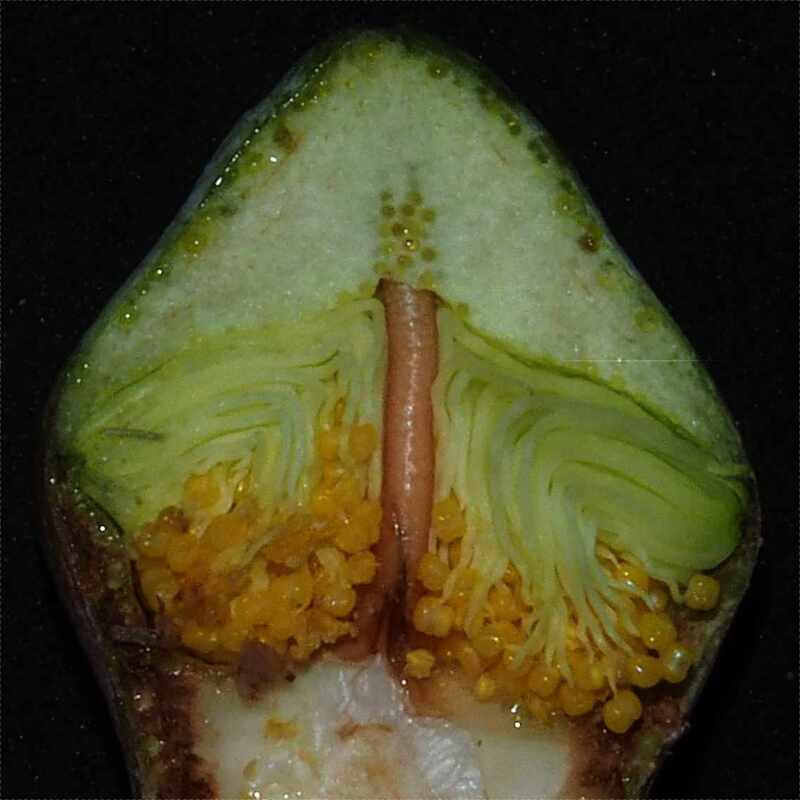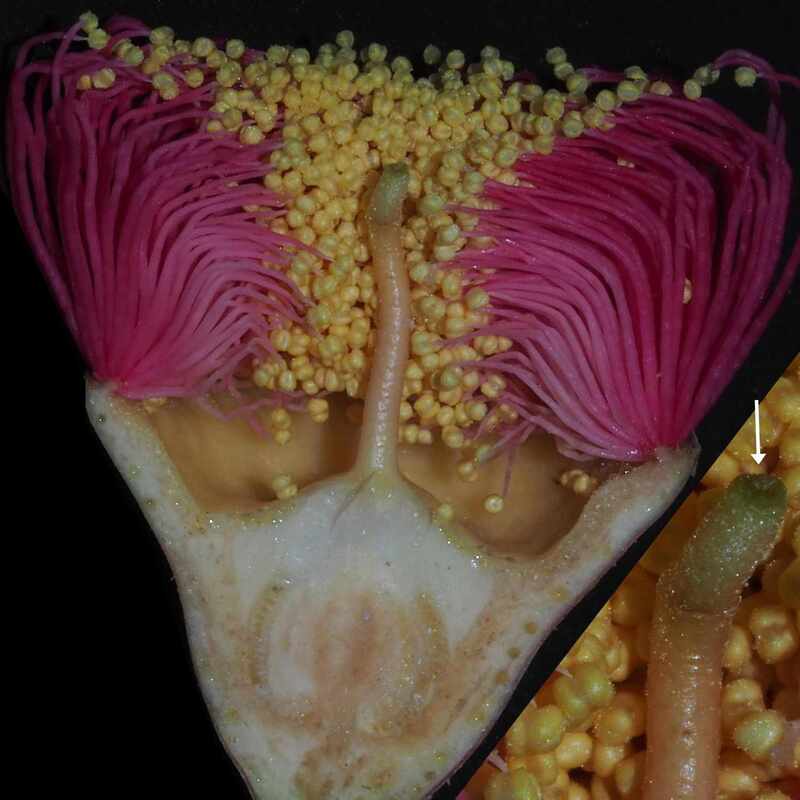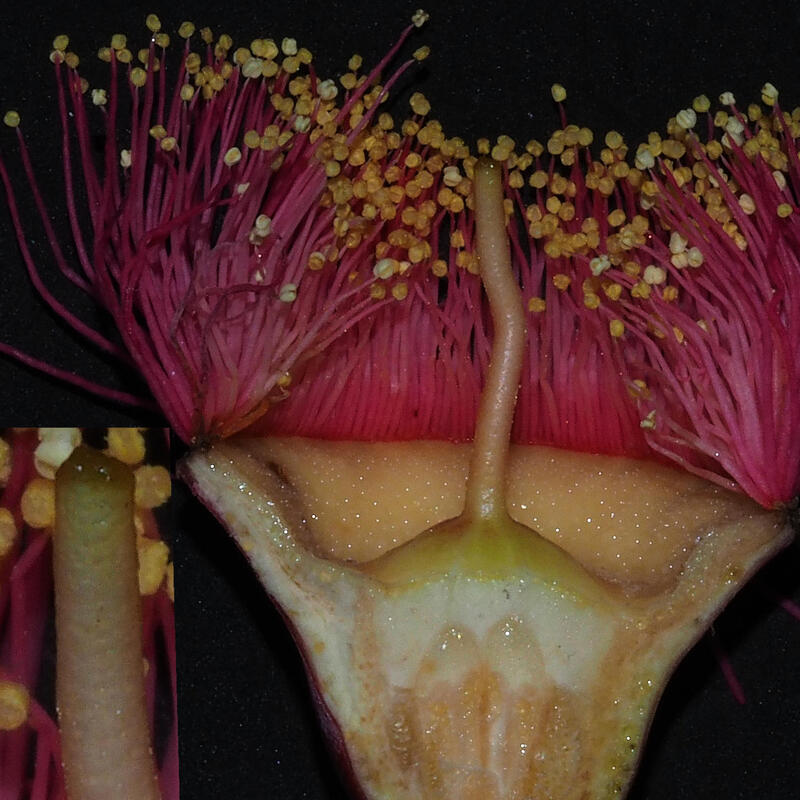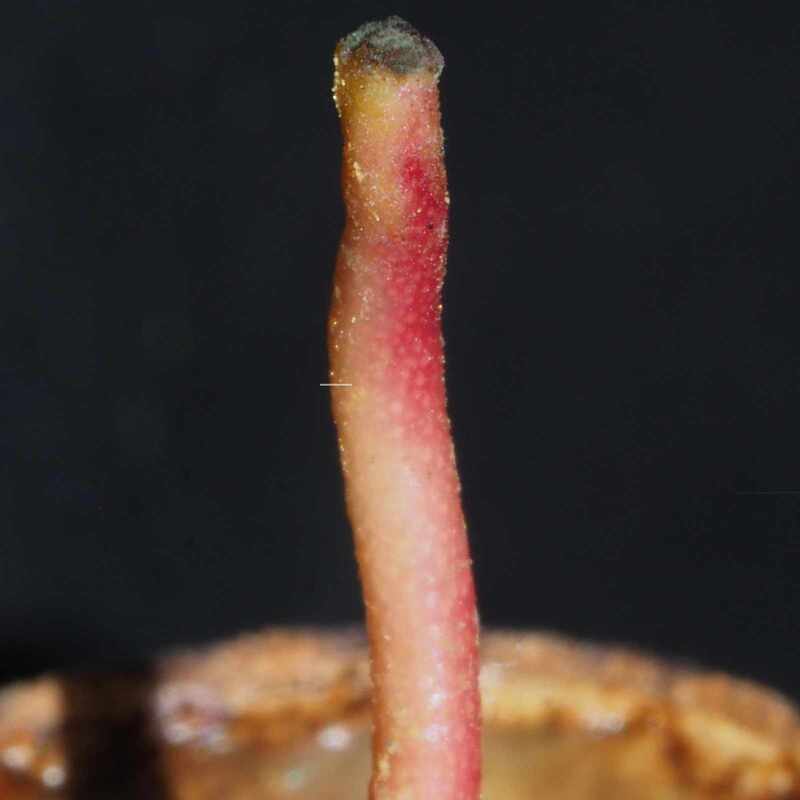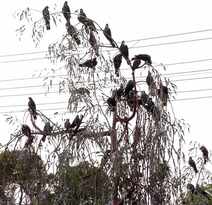 30+ Carnabys cockatoos on my E. caesia
30+ Carnabys cockatoos on my E. caesia About 33 years ago I planted a Eucalyptus caesia subspecies caesia (gungurru) mallee in my front yard, which has grown into a magnificent specimen that produces cascades of beautiful pink flowers. It is great bird attractant, particularly New Holland honeyeaters and western wattle birds, which claim ownership at various times of the year. Lately most flowers (and my wife's roses and geraniums) are lopped by ### twenty eight parrots. Very occasionally red-tailed black and Carnabys cockatoos chew the nuts, but not red capped parrots. Plenty of honeybees.
Eucalyptus caesia is a rare bird-pollinated species that is endemic to 25 granite outcrops in the Central Wheatbelt of Western Australia, but is widely grown in native gardens. Every surviving flower on my caesia develops into a nut even though the nearest other caesia is over 200 metres down the road, and I see the same with single eucalypt species in Foxes Lair. Evidently most eucalypts can self pollinate!
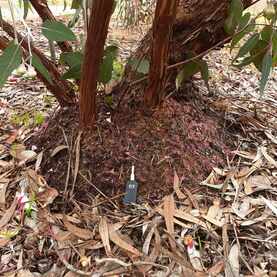 Lignotuber on my 33 year old E.caesia
Lignotuber on my 33 year old E.caesia - The large flowers are mainly pollinated by birds, which regularly transmit pollen up to 120 metres.
- On average there were three genetic groups at each mallee patch, which minimised damaging inbreeding. Insect-pollinated plants would have less diversity
- Clumps often had a group of clone plants which developed into individual plants as the lignotuber (mallee root) expanded then rotted between suckers. The largest clonal patch comprised 55 stems over an area 8.8 m wide and 11.5 m long. This patch may be thousands of years old and among the oldest known eucalypts. I was impressed by the 80cm diameter root on my 33 year old plant before reading the paper.
- At natural Caesia locations, there hasn't been a surviving seedling for over 50 years. Fire is required to remove competition.
- The paper provides an opportunity to revise your knowledge of statistics and words like cleistogamy and kurtosis.
Signs of stigma maturity were subtle, but images show it changes from being hidden in the bud cap,then a fold at the tip (non-receptive), to a moist receptive bulge.
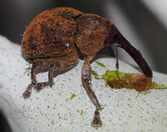
Apart from stink bugs, which routinely remove growing points from most seedlings I try to rear in Foxes Lair, few insects bother my street tree. This little fellow is tolerated.



